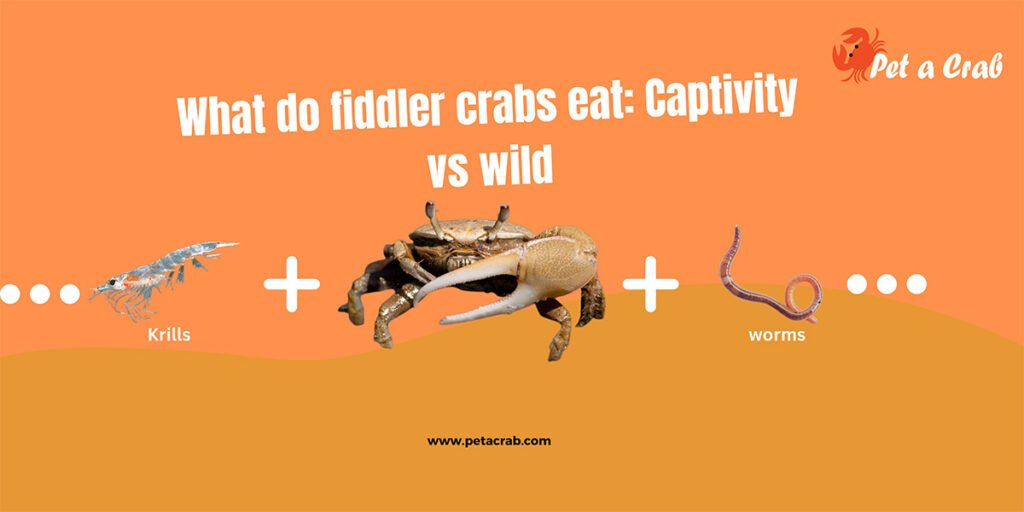Lepidothelphusa padawan, commonly known as the panda crab, is a small yet highly recognized species of crab. Usually, they are semi-terrestrial and can be a good choice for a paludarium setup.
Though the crabs are fairly hardy creatures, they need warm temperatures with high humidity in your tank. The reason is that it is becoming more and more common to keep it as a pet in the aquarium. Besides, there is an increase in demand for them among other crab enthusiasts.
However, if you are thinking about keeping Lepidothelphusa Cognetti as a pet, this article provides a comprehensive collection of all the information you need. This can help create the perfect environment for your crabs and keep them thriving.
What is a panda crab?
A panda crab is a particularly pretty and still quite unusual crab in the white scissor dwarf crab family. Typically, it occurs in Borneo in a tiny area. The crab is not only easy to breed in the aqua terrarium but also suitable for the beautifully sacred aqua terra. Because they leave plans completely alone, their unusual coloration makes them a real eye-catcher, and their interesting behavior reinforces this.
The average size of this adult crab is only about 0.4 -0.6 inches long. In addition, it has a unique white-dark and purple-to-black color pattern that can help make it more unique and eye catchy. The males have an almost or entirely white carapace, dark purple walking legs and at least three distinctive characteristics on the carapace.

Quick Overview of Panda Crab
- Scientific Name: Lepidothelphusa Cognetti
- Tank Size: 5 gallons
- Type: Semi-terrestrial
- Temperament: Peaceful
- Diet: Omnivore
- Keeping: Easy
- Breeding: Medium
- Average Size: Upto 0.4 to 0.6 inches
- Optimal Temperature: 75 to 82 °F
- Lifespan: Upto 3 years
- Other names: Sarawak Land Crab, White Scissor Crab, Skull Crab, and Borneo Crab.
Interesting Key Facts About Panda Crab
Appearance
The Sarawak land crab has a carapace and claws that are white to yellowish. The legs and eyes are black to purple. Although there are quite a few other different color variations. Furthermore, the small crab reaches a carapace diameter of 3 to 4 cm.
Habitat and Distribution
The skull crab species has only been described in one location, which is Kampung Sentah in the Padawan district of Sarawak, Malaysia. Besides, it is found in karstic, hilly areas with hard water. In the Borneo rain forest, it accommodates foliage near streams and waterfalls. Both the land and water can survive. However, it is very important that, when keeping these crabs in captivity, pristine water is a must.

Behavior
The panda crabs have complex social relationships. Besides, they can be found in groups. Whether the panda male crabs may occasionally act aggressively toward one another. These crabs are usually active at night and can even come out during the day. Primarily, they are not very shy, especially when they are in large groups.
Feeding
Usually, Lepidothelphusa cognetti is classified as an omnivore. Because they have adapted to eating both plant material and dead or alive animals. That means they will be able to eat just about any food they manage to find at the bottom of the tank.
In captivity, they will eat a wide variety of foods, including vegetables, detritus, leaf litter, seeds, bloodworms, earthworms, fruit blackworms, freshly crushed snails, and dead fish or shrimp. Although the Borneo crabs are not picky eaters, that does not mean we can provide the same food every day.
Molting and Reproduction
The Skull Crab will molt about once a year and they will dig down in the substrate to molt. The molting process can take several weeks and can be done in completely fresh water. Unlike most crabs, they breed in freshwater.
In addition, the panda female crabs will carry many large eggs for several weeks. The young hatch from the eggs, and the offspring appear as miniature adults.
Lifespan
Among the other crabs, the crab’s species is not long live. The average lifespan of this crab is upto 3 years in captivity. But if you provide special care and diet, they may often live longer.

Keeping and caring for panda crab
If you want to keep Skull Crab in the aquarium or make them happy, you need to take care of their fundamental needs. As they are not entirely aquatic species. Below, I am providing the semi-terrestrial species keeping and caring needs that you should follow.
Tank Size
The panda crab’s small size requires less space than most other species of crabs. So the suitable tank is 5 gallons with lots of hiding places that can easily hold 3 adult crabs. Unless you have a larger tank, multiple crab species should not be kept together in the same enclosure due to potential territorial fights and hostility.
Classic paludarium setup
If you choose to put Borneo crabs in a traditional aquarium setup, you must be aware of their preferences. Here are the preferences.
- pH: A suitable pH range is between 7.0-8.0.
- Temperature: The temperature should be between 75-82F.
- Hardness: Also, the hardness is KH 0-10 and GH is 4-16.
Substrate
It is crucial to provide them with coconut fibre, soil, and peat to replicate their natural environment. Besides, you can use smooth gravel and sand for the aquatic section. Moreover, there is no requirement for deep substrate. In most cases, the substrate is 2-3 inches.
Temperature
Usually, Sarawak land crabs prefer a warm and humid environment. So the ideal temperature range for them is between 75-82F. But the average temperature in their natural habitat is around 72F- 90F.
Frequently Asked Questions
Do Skull Crabs need calcium?
Yes, it is a vital component of their shells, cell function and overall health. A calcium deficiency can cause weakness and cracks in the shell. This causes dehydration. However, you can find calcium in kale, broccoli, cuttlebones, figs and nuts.
Are Borneo crab plants safe?
Yes, they are safe to keep in planted aquariums and they usually do not uproot or cut plants.
Who are the best tankmates for panda crabs?
Usually, the species of crabs are kept in a group relatively safely but only under several conditions. Whatever is possible, keep dwarf shrimp and small fish with these crabs.
Who are the bad tankmates for Sarawak Land Crab?
The bad tankmates of these crabs are any crayfish species, other crabs and frogs.
Related article – The scarry devil crab


